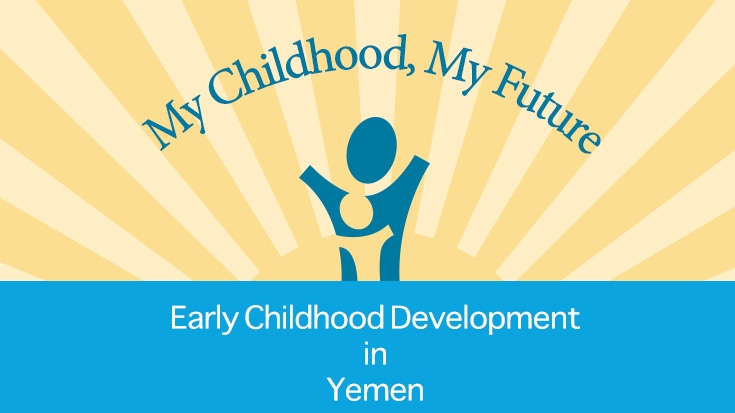The status of Early Childhood Development (ECD) in the Republic of Yemen
- Less than half of children receive prenatal care (47%), or have a skilled attendant during delivery (36%).
- Infant and child mortality is three times higher than the regional average.
- Only 41% of children are fully immunized.
- More than half of children (53%) are stunted and almost half (46%) underweight.
- Only 3% of children age 3–5 are in Early childhood Care and Education (ECCE) and only a quarter (26%) under the age of 5 engage in childhood development activities.
- About 16% of children age 5 engage in child labor.
- Over 90% of children experience violent discipline.
Figure 1. Early childhood development indicators for Republic of Yemen (%)
Source: Authors’ calculations based on Republic of Yemen MICS 2006, except stunted, underweight, wasted based on the Republic of Yemen PAPFAM 2003.
Children in the Republic of Yemen have unequal opportunities of healthy development based on factors beyond their control.
There are substantial differences in the opportunities children have of healthy development and accumulating human capital. Early childhood is also when cycles of poverty and inequality are transmitted across generations. Children tend to be consistently advantaged or disadvantaged across a variety of different dimensions of ECD, and can face very different life chances based on just a few family background characteristics. If we observe a child who lives in the rural west of Yemen, in the poorest 20% of households, with uneducated parents (a “least advantaged” child), and compare that child to one who has parents with secondary or higher education, is from the richest 20% of households, and lives in urban Aden (a “most advantaged” child), we find they have very different chances of healthy ECD. Figure 2 presents the chances of different ECD indicators for these “least advantaged” and “most advantaged” individuals.
For every indicator except child labor, the least advantaged child has much poorer ECD. Comparing the least and most advantaged, the gap in prenatal care is 71 percentage points, and the gap in having a trained attendant at delivery is 79 percentage points. In terms of both prenatal care and delivery care, the most advantaged child is around five times as likely to receive care as the least advantaged child. The least advantaged child is 73 percentage points less likely to be immunized. This means the most advantaged child is six times as likely to be protected against childhood illnesses and potential mortality. While both the most and least advantaged children risk high chances of stunting, being underweight, or wasting, the least advantaged child is 20 percentage points more likely to be stunted, 21 percentage points more likely to be underweight, and 7 percentage points more likely to be wasted. The least advantaged child is 45 percentage points less likely to experience four childhood development activities. This means that the most advantaged child is five times more likely to experience activities that will help him/her develop cognitively, socially, and emotionally. The most advantaged child is, however, 29 percentage points more likely to be engaged in child labor, something that may be related to the different economic opportunities wealthier families face.
Figure 2. Inequality in the chances for healthy early childhood development (%)
Source: Authors’ simulations of chances for a “most advantaged” and a “least advantaged” child based on calculations using Republic of Yemen MICS 2006, except stunted, underweight, wasted based on the Republic of Yemen PAPFAM 2003.


